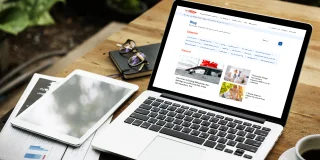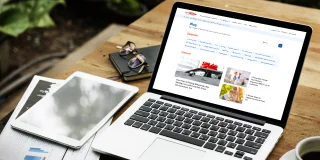Are You Quake Ready?
If you live in California, in addition to infamous traffic jams and giant potholes, you have to live with the threat of earthquakes. And, in the last few weeks, we’ve been reminded about how helpless we are living on shaky ground. But, like buckling your seat belt in your car, the actions you take now to stay safe when the next big earthquake hits, may save your life. Being prepared is the key to your survival. Don’t wait any longer to get ready – start now — you’ll be glad you did.
Here are steps you can take right now to help you safely ride out the next big one.
1. Earthquake insurance
First, review your insurance policies annually to make sure your home is covered – most homeowners’ insurance and renters’ insurance policies don’t cover damage from earthquakes – you need a separate earthquake policy.
2. Practice how to drop, cover and hold on: During an earthquake, know how to drop to the ground, take cover under sturdy furniture, and hold on to that furniture until after the shaking stops.
3. Identify earthquake hazards in your home
Secure heavy objects. Hang heavy items such as pictures and mirrors, away from beds, couches, and anywhere people sleep or sit. Bolt and brace water heaters, gas appliances, bookcases, china cabinets and other tall furniture to wall studs. Do you live, work, or travel near the coast? Find out what areas are at risk of a tsunami.
4. Make a plan: Identify out-of-area emergency contacts. Decide where to reunite with loved ones after a disaster in case phone lines are down. Write your plan on an emergency contact card and store in your phone along with important numbers for emergency resources in your area.
5. Put together several disaster supplies kits: Because you don’t know where you will be when an earthquake occurs, prepare a Disaster Supplies Kit for your home, workplace, and car. Your home should have a larger household kit with supplies to last three days to one week. You can put these together yourself or buy them from survival gear companies that sell ready-made kits.
Here is what the Federal Emergency Management Agency (FEMA) recommends for a Basic Disaster Supplies Kit:
• Water, one gallon of water per person per day for at least three days, for drinking and sanitation
• Food, at least a three-day supply of non-perishable food
• Battery-powered or hand crank radio and a NOAA Weather Radio with tone alert and extra batteries for both
• Flashlight and extra batteries
• First aid kit
• Whistle to signal for help
• Dust mask to help filter contaminated air and plastic sheeting and duct tape to shelter-in-place
• Moist towelettes, garbage bags and plastic ties for personal sanitation
• Wrench or pliers to turn off utilities
• Manual can opener for food
• Local maps
• Cell phone with chargers, inverter or solar charger
Once you have put together the supplies for a basic emergency kit, these supplemental items are important to add:
• Prescription medications and glasses
• Infant formula and diapers
• Pet food and extra water for your pet
• Cash or traveler’s checks and change
• Important family documents such as copies of insurance policies, identification and bank account records in a waterproof, portable container
• Emergency reference material such as a first aid book
• Sleeping bag or warm blanket for each person.
• Complete change of clothing including a long sleeved shirt, long pants and sturdy shoes.
• Household chlorine bleach and medicine dropper – When diluted, nine parts water to one part bleach, bleach can be used as a disinfectant.
• Fire extinguisher
• Matches in a waterproof container
• Feminine supplies and personal hygiene items
• Mess kits, paper cups, plates, paper towels and plastic utensils
• Paper and pencil
• Books, games, puzzles or other activities for children
Important notes about water
• A normally active person needs at least ½ gallon of water daily just for drinking.
• Store water in plastic containers
• Do not store any plastic water container directly on concrete to prevent contaminating chemicals leaching from the concrete into the water and also degrading the plastic bottle.
• If you use your own containers of water, you should buy air-tight, food-grade water storage containers from surplus or camping supply stores. Replace water every 6 months.
• To ensure water quality, purify it before drinking
- Heat water to a rolling boil for 1 minute or use commercial purification tablets.
- You can also use household liquid chlorine bleach if it is pure, unscented, 5 to 6 percent sodium hypochlorite. Do not use scented, color safe or bleaches with added cleaners.
How to Purify Water with Bleach
Water Quantity
- Quart
- 1 Gallon
- 5 Gallons
Bleach Added
- 4 Drops
- 16 Drops
- 1 Teaspoon
After adding bleach, shake or stir the water container and let it stand 30 minutes before drinking.
The Federal Emergency Management Agency (FEMA) is a great resource for additional information to help be prepared for all types of disaster situations.
So, the time to prepare is now. Even if you don’t have homeowners’ insurance or renters’ insurance, being ready will give you some peace of mind when things shake, rattle and roll.



